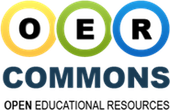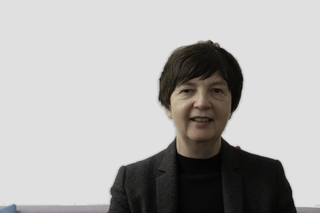A teaching method is a set of principles and methods used by teachers to enable student learning. These strategies are determined partly on subject matter to be taught, partly by the relative expertise of the learners, and partly by constraints caused by the learning environment. For a particular teaching method to be appropriate and efficient it has take into account the learner, the nature of the subject matter, and the type of learning it is supposed to bring about.

Student-centered learning, also known as learner-centered education, broadly encompasses methods of teaching that shift the focus of instruction from the teacher to the student. In original usage, student-centered learning aims to develop learner autonomy and independence by putting responsibility for the learning path in the hands of students by imparting to them skills, and the basis on how to learn a specific subject and schemata required to measure up to the specific performance requirement. Student-centered instruction focuses on skills and practices that enable lifelong learning and independent problem-solving. Student-centered learning theory and practice are based on the constructivist learning theory that emphasizes the learner's critical role in constructing meaning from new information and prior experience.

Pedagogy, most commonly understood as the approach to teaching, is the theory and practice of learning, and how this process influences, and is influenced by, the social, political, and psychological development of learners. Pedagogy, taken as an academic discipline, is the study of how knowledge and skills are imparted in an educational context, and it considers the interactions that take place during learning. Both the theory and practice of pedagogy vary greatly as they reflect different social, political, and cultural contexts.
Openness is an overarching concept that is characterized by an emphasis on transparency and collaboration. That is, openness refers to "accessibility of knowledge, technology and other resources; the transparency of action; the permeability of organisational structures; and the inclusiveness of participation". Openness can be said to be the opposite of closedness, central authority and secrecy.

Open educational resources (OER) are teaching, learning, and research materials intentionally created and licensed to be free for the end user to own, share, and in most cases, modify. The term "OER" describes publicly accessible materials and resources for any user to use, re-mix, improve, and redistribute under some licenses. These are designed to reduce accessibility barriers by implementing best practices in teaching and to be adapted for local unique contexts.
Open learning is an innovative movement in education that emerged in the 1970s and evolved into fields of practice and study. The term refers generally to activities that either enhance learning opportunities within formal education systems or broaden learning opportunities beyond formal education systems. Open learning involves but is not limited to: classroom teaching methods, approaches to interactive learning, formats in work-related education and training, the cultures and ecologies of learning communities, and the development and use of open educational resources. While there is no agreed-upon, comprehensive definition of open learning, central focus is commonly placed on the "needs of the learner as perceived by the learner." Case studies illustrate open learning as an innovation both within and across academic disciplines, professions, social sectors and national boundaries, and in business and industry, higher education institutions, collaborative initiatives between institutions, and schooling for young learners.
The term learner-generated context originated in the suggestion that an educational context might be described as a learner-centric ecology of resources and that a learner generated context is one in which a group of users collaboratively marshall available resources to create an ecology that meets their needs.

Open education is an educational movement founded on openness, with connections to other educational movements such as critical pedagogy, and with an educational stance which favours widening participation and inclusiveness in society. Open education broadens access to the learning and training traditionally offered through formal education systems and is typically offered through online and distance education. The qualifier "open" refers to the elimination of barriers that can preclude both opportunities and recognition for participation in institution-based learning. One aspect of openness or "opening up" education is the development and adoption of open educational resources in support of open educational practices.
An open textbook is a textbook licensed under an open license, and made available online to be freely used by students, teachers and members of the public. Many open textbooks are distributed in either print, e-book, or audio formats that may be downloaded or purchased at little or no cost.
Second-language acquisition classroom research is an area of research in second-language acquisition concerned with how people learn languages in educational settings. There is a significant overlap between classroom research and language education. Classroom research is empirical, basing its findings on data and statistics wherever possible. It is also more concerned with what the learners do in the classroom than with what the teacher does. Where language teaching methods may only concentrate on the activities the teacher plans for the class, classroom research concentrates on the effect the things the teacher does has on the students.
Digital learning is learning that is supported by technology. It encompasses any type of learning that is accompanied by technology or by instructional practice that makes effective use of technology. It includes a wide array of practices, including blended and virtual learning.

The Institute for the Study of Knowledge Management in Education (ISKME), is a 501(c)(3) non-profit organization founded in 2002. Located in Half Moon Bay, California, its mission is to make learning and knowledge sharing participatory, equitable, and open.

OER Commons is a freely accessible online library that allows teachers and others to search and discover open educational resources (OER) and other freely available instructional materials.
Open educational resources (OER) are learning materials that reside in the public domain or have been released under an intellectual property license that permits their free use and re-purposing by others. OER policies are adopted by governments, institutions or organisations in support of the creation and use of open content, specifically open educational resources (OER), and related open educational practices.
Translanguaging is a term that can refer to different aspects of multilingualism. It can describe the way bilinguals and multilinguals use their linguistic resources to make sense of and interact with the world around them. It can also refer to a pedagogical approach that utilizes more than one language within a classroom lesson. The term "translanguaging" was coined in the 1980s by Cen Williams in his unpublished thesis titled “An Evaluation of Teaching and Learning Methods in the Context of Bilingual Secondary Education.” Williams used the term to describe the practice of using two languages in the same lesson, which differed from many previous methods of bilingual education that tried to separate languages by class, time, or day. In addition, Vogel and Garcia argued that translanguaging theory posits that rather than possessing two or more autonomous language systems, as previously thought when scholars described bilingual or multilingual speakers, bilinguals and multilingual speakers select and deploy their languages from a unitary linguistic repertoire. However, the dissemination of the term, and of the related concept, gained traction decades later due in part to published research by Ofelia García, among others. In this context, translanguaging is an extension of the concept of languaging, the discursive practices of language speakers, but with the additional feature of using multiple languages, often simultaneously. It is a dynamic process in which multilingual speakers navigate complex social and cognitive demands through strategic employment of multiple languages.
The UNESCO 2012 Paris OER Declaration, otherwise known as the Paris declaration on Open Educational Resources, is a declaration urging governments to promote the use of open educational resources (OERs) and calling for publicly funded educational materials to be released in a freely reusable form.
Language MOOCs are web-based online courses freely accessible for a limited period of time, created for those interested in developing their skills in a foreign language. As Sokolik (2014) states, enrolment is large, free and not restricted to students by age or geographic location. They have to follow the format of a course, i.e., include a syllabus and schedule and offer the guidance of one or several instructors. The MOOCs are not so new, since courses with such characteristics had been available online for quite a lot of time before Dave Cormier coined the term 'MOOC' in 2008. Furthermore, MOOCs are generally regarded as the natural evolution of OERs, which are freely accessible materials used in Education for teaching, learning and assessment.
Open Educational Practices in Australia refers to the development, implementation and use of Open educational resources (OER), open access, open learning design, open policies, and Massive Open Online Courses (MOOCs) to open up education in Australia.
Open educational resources in Canada are the various initiatives related to open education, open educational resources (OER), open pedagogies (OEP), open educational practices (OEP), and open scholarship that are established nationally and provincially across Canadian K-12 and higher education sectors, and where Canadian based inititatives extend to international collaborations.

Allison Littlejohn, FHEA, is Professor of Learning Technology at University College London. She is a director of University College London's knowledge lab and an expert in learning sciences, specialising in professional and digital learning.







